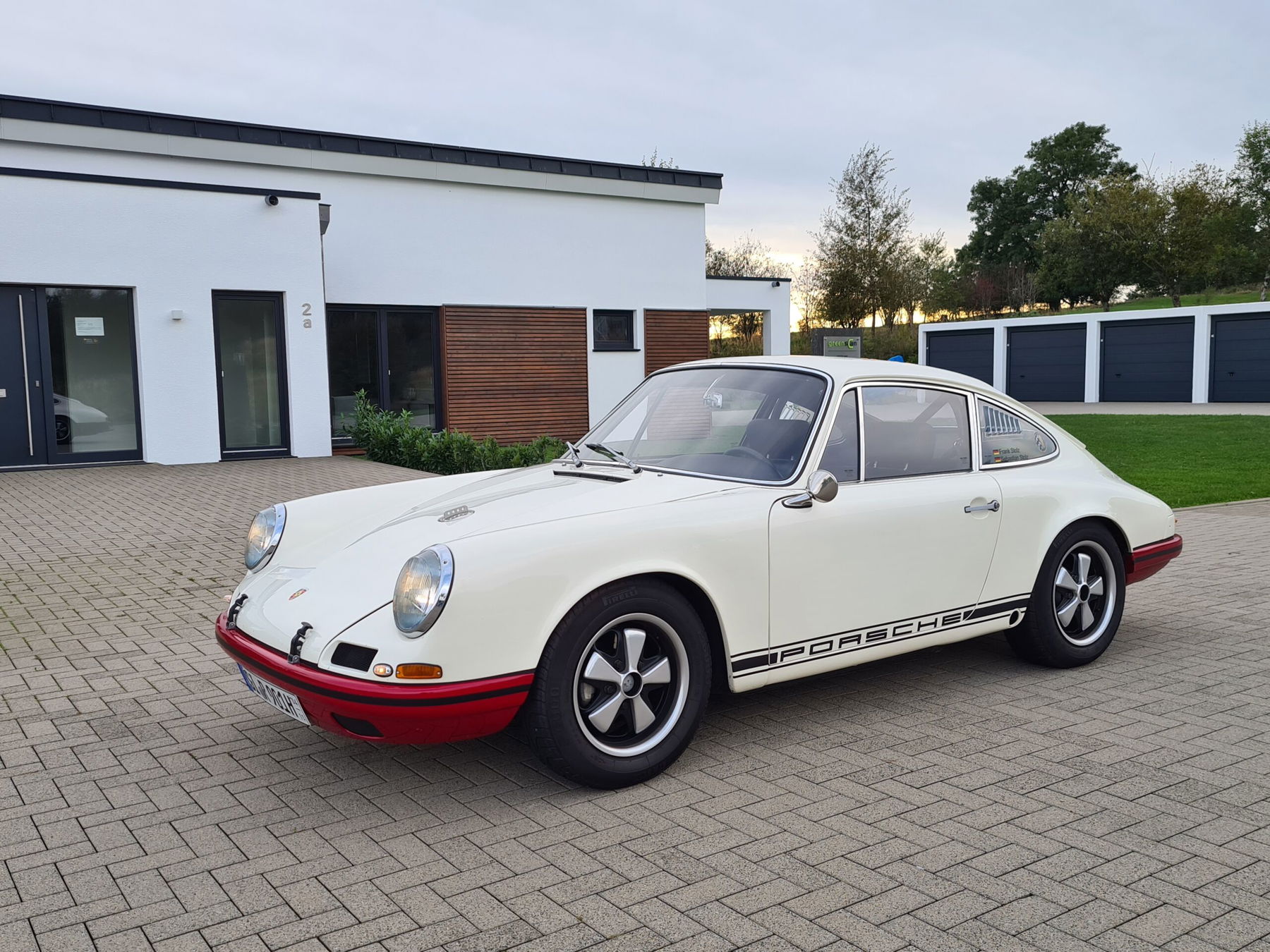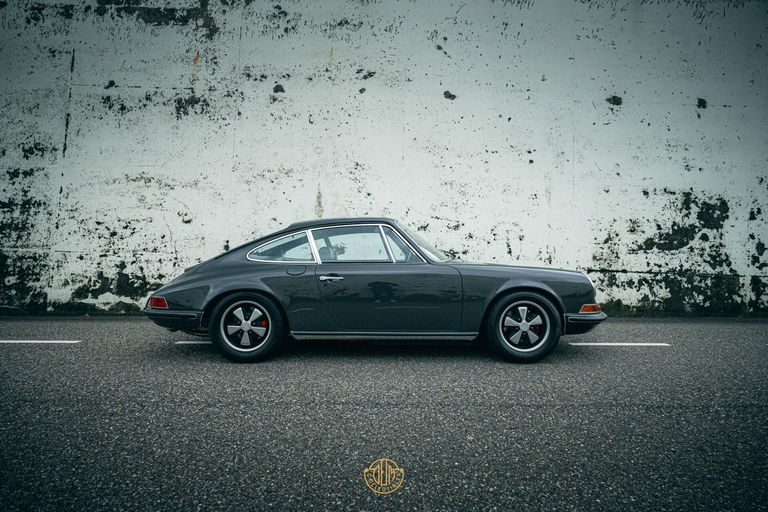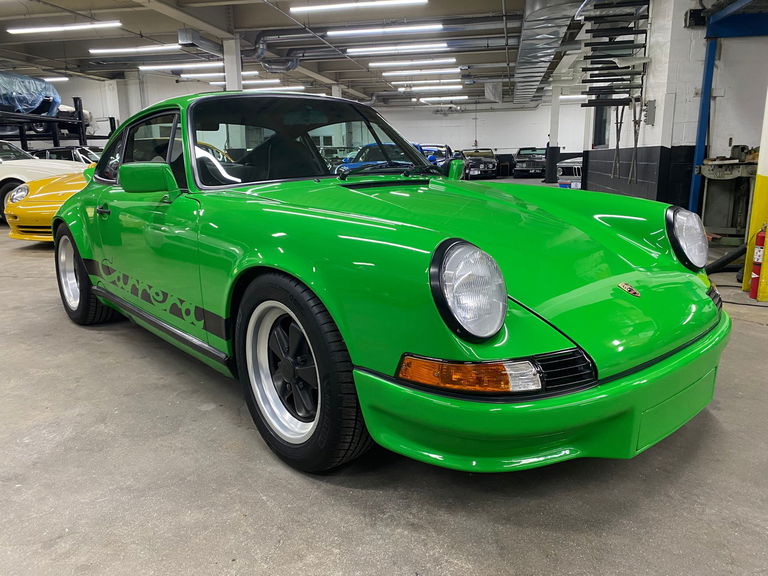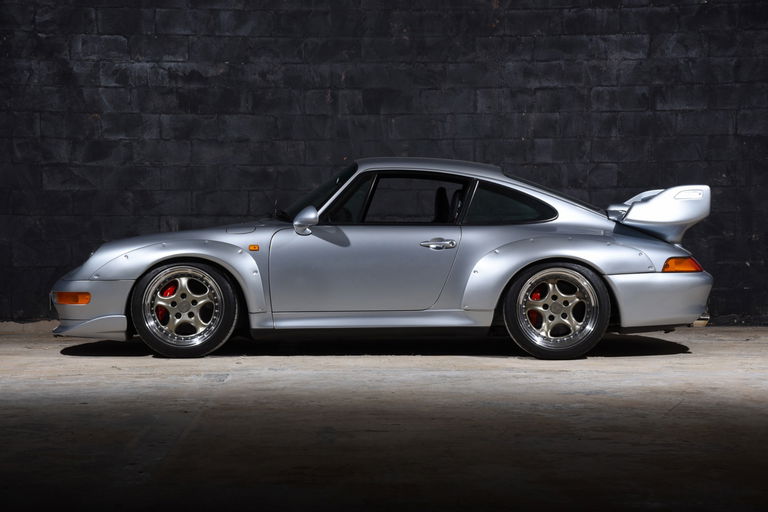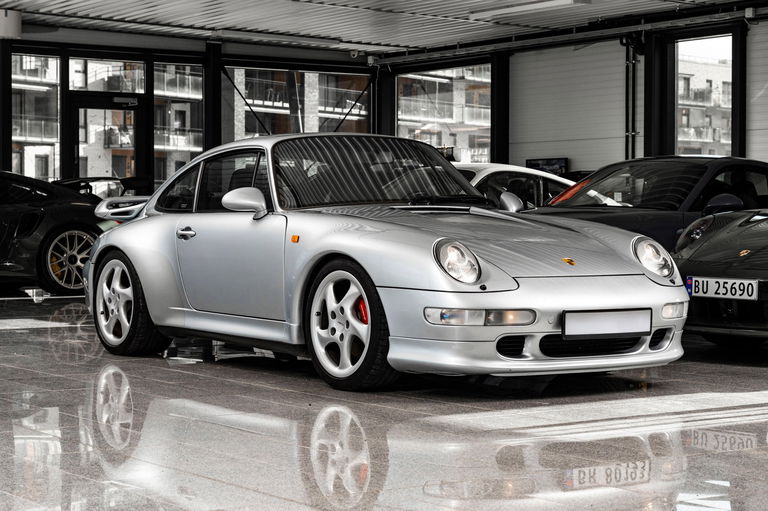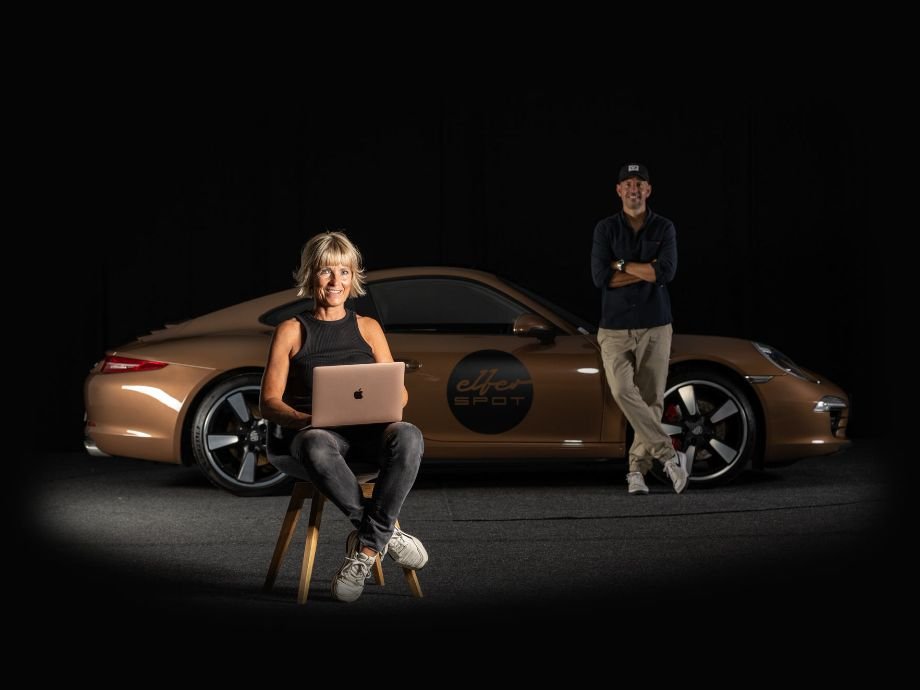Base vehicle Porsche 912, built in 1966, delivered in Rome, then exported to California, imported to Germany
Body:
- Painted in "light ivory", bumpers in carmine red
- open oil filler neck in the rear right side panel
- new laminated glass windshield
- all other windows in polycarbonate with test mark
- Rear side windows with fresh air gills and drip trays
- Aluminium window frames front and rear, newly anodized
- GRP front mudguards
- GRP bumpers
- GRP front hood
- Aluminum bonnet
- GRP 911R rear lights
- Plastic door handles
- Quick-release fasteners on front and rear hood
- Original doors with "Matching No." KTL coated
- No underbody protection
Chassis:
- Stabilizers on front and rear axle
- reinforced rear torsion bars
- Adjustable "Koni Red" shock absorbers
Brakes:
- front ventilated and perforated with 911 RS or S aluminum brake calipers
- rear: ventilated and perforated with 911 S SWB callipers
Wheels:
- front 6 x 15 in Fuchs design, anodized with 185/70 R 15 Pirelli P6000, N-marking
- rear 7 x 15 in Fuchs design, anodized with 185/70 R 15 Pirelli P6000, N-marking
- Spacers front and rear
Interior:
- Newly upholstered dashboard cover
- new headlining
- Roll bar with diagonal brace
- 911 S carpet
- 370mm Abarth steering wheel in very good original leather
- Rev counter with conversion to 10,000 rpm
- Speedometer with trip odometer, revised
- Porsche leather horn button
- Three-point safety belts
- Mounts for six-point H-belts
- Lightweight aluminum glove compartment lid
- "Classic Race 2.0" seats with integrated seat belt mounts and lowered seats
- RS door panels
- Titanium pull handles
- Lightweight door opener
- Aluminum pedal boards left and right with footrest on the driver's side
- adjustable gas pedal pedal
- JWest shifter with short shift travel and guide in center position and wooden shift knob
- JWest shift rod coupler
Further technical equipment:
- Fire extinguisher
- New wiring harness with fuse box in the interior
- LiFePo lightweight battery with aluminum holder
- Battery disconnect switch with remote release
- 100 liter fuel tank with 100mm central fuel filler neck
- Webasto parking heater
- 911R Hazet tool set in leather roll-up bag
- 4.5 x 15 Fuchs Design spare wheel
- all screws, steel attachments etc. are either new or have been re-galvanized
The vehicle was delivered in Rome in 1966 as a Porsche 912. At a time that can no longer be researched, the car was sold to the USA or California and subsequently driven exclusively in California. After the vehicle was returned to Germany in the mid-2000s, the car, now in need of restoration, was stored in the German importer's warehouse for a long period of time and was sold in 2011. The new owner began restoring the car after purchasing it. He stripped the car down to the body shell and then sanded the paint down to the bare metal.
The floor pan, the tank support, the front panel and the two engine cut-outs were then renewed in a specialist body shop on a straightening bench, all seams were sealed, the interior was painted black and the body was painted on the outside with rust primer.
Due to family circumstances, the restoration was interrupted and the car was sold on mounted axles along with some other parts.
i then rebuilt the car in the style of the legendary lightweight Porsche 911R, i.e. all conceivable weight savings were made, always with the aim of making the car suitable for everyday use.
The car has GRP bumpers, GRP fenders, a GRP hood and an aluminum hood. The paintwork was professionally rebuilt on bare metal in a paint store and painted in the color "light ivory". To this day, no rust is visible, which speaks for the quality of the paint work carried out seven years ago.
The typical 911R features on the body immediately catch the eye. These include the two large cooling air openings in the front fenders, the extremely lightweight GRP rear light carriers at the rear of the car and a fuel filler cap that peeks through the front hood. The two plastic door handles and the oil filler neck in the rear right-hand side panel are also very authentic.
A black headliner was fitted in the interior, the floor was insulated and a high-quality gray velour carpet was glued to it. The dashboard pad was reupholstered and the speedometer and rev counter were overhauled by a speedometer service. The rare and perfectly preserved 370 mm Abarth steering wheel and the two Classic Race seats with integrated seat belt holders and ventilation rivets are particularly eye-catching. The unrestored Abarth steering wheel still has the original leather with a wonderful patina, while the genuine leather seats combine a classic look with seating comfort and offer perfect lateral support. Lightweight door panels in the style of the 911RS were installed in the door area, the handles are made of lightweight titanium with a black finish.
The roll bar mounted in the rear part of the passenger compartment is painted satin black and ensures safety in the event of an accident.
The vehicle was fitted with a new laminated glass windshield as part of the restoration, all side windows and the rear window were also replaced and are made of polycarbonate. The rear side windows also have the open and typical fresh air gills of the 911R, water collection trays and can also be opened.
No compromises were made when it came to the brakes. The vehicle has internally ventilated and perforated disc brakes at the front and rear. Lightweight aluminum brake calipers from the 911 RS and 911 S successor models decelerate at the front, while the rare calipers from the 911 S with short wheelbase decelerate at the rear. The vehicle is equipped with adjustable red Koni shock absorbers, has front and rear stabilizers and also has stronger torsion bars on the rear axle.
The engine was rebuilt on a magnesium housing. The crankshaft and connecting rods correspond to the engine of the 1973 2.4 liter engine. The aluminum Biral cylinders were honed and fitted with new Mahle pistons from Wahl, which have a compression ratio of 10.2 / 1. In conjunction with the installed Nowak camshafts and Weber 46 IDA carburetor, the engine was tuned on a test bench and an output of 196 hp was determined approx. 500 rpm below the maximum speed. At top speed, a peak output of 210 hp can be expected, reflecting the car's exceptionally good performance.
The vehicle has a dry weight of approx. 870 kg without tool kit and spare wheel and can therefore be driven in a very sporty manner. The steering is incredibly direct, but it still has very good directional stability at high speeds.
For international inquiries: Do not hesitate to contact me in english language. Phon-number on request
